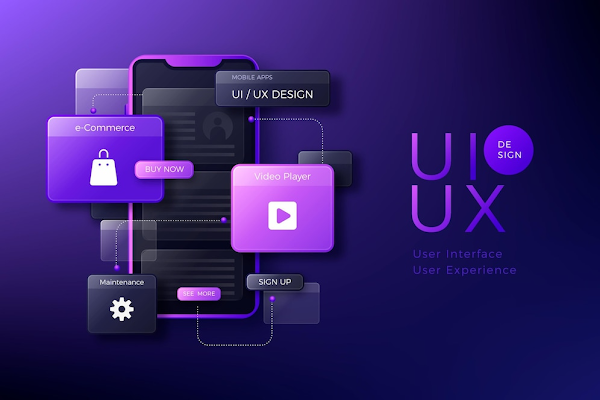In the ever-evolving landscape of User Experience (UX) and User Interface (UI) design, the limelight often shines on quantitative data, especially with A/B testing. Yet, standing in the wings is a formidable force—qualitative UX research. This blog post delves into the world beyond A/B testing, exploring the intricacies of qualitative research and how it unlocks profound insights.
Beyond A/B Testing: Unleashing the Power of Qualitative UX Research for Deeper Insights
In the ever-evolving landscape of User Experience (UX) and User Interface (UI) design, the limelight often shines on quantitative data, especially with A/B testing. Yet, standing in the wings is a formidable force—qualitative UX research. This blog post delves into the world beyond A/B testing, exploring the intricacies of qualitative research and how it unlocks profound insights.
What is Qualitative Testing in UX?
Qualitative testing in UX delves into the subjective aspects of user experience. Unlike quantitative testing that focuses on numerical data, qualitative testing aims to understand the 'why' behind user behaviors. This method involves in-depth exploration through techniques like interviews, usability testing, and open-ended surveys, providing a rich tapestry of user insights.
Finding Insights from Qualitative User Research
Insights from qualitative user research emerge from the nuances of user behavior and attitudes. By engaging users in open-ended conversations, observing their interactions, and encouraging them to express their thoughts, designers uncover valuable information that quantitative data alone cannot provide. These insights often reveal the motivations, frustrations, and emotions that shape user experiences.
Why Qualitative Research is Essential for Quality UX Design Work
While A/B testing provides quantitative metrics, qualitative research adds the human touch to design decisions. Understanding the 'why' behind user preferences and actions is crucial for crafting meaningful and user-centric designs. Qualitative research bridges the gap between analytics and empathy, ensuring that the end product not only meets functional requirements but resonates with users on a deeper, emotional level.
Analyzing Qualitative Data in UX Research
Analyzing qualitative data involves a thoughtful and iterative process. Researchers begin by transcribing and organizing data, identifying recurring themes and patterns. Coding, a method of categorizing data, helps in extracting meaningful insights. Interpretation involves connecting the dots, turning raw data into actionable design recommendations. This iterative analysis ensures that the depth of user insights is fully explored and integrated into the design process.
The Role of Interviews in Qualitative Research
One of the pillars of qualitative research is user interviews. Conducting interviews allows designers to directly connect with users, uncovering their perceptions, preferences, and pain points. Through open-ended questions, designers gain a holistic understanding of the user's journey, preferences, and emotional responses, providing valuable context to inform design decisions.
Usability Testing: Unveiling User Experiences in Real-time
Usability testing is a qualitative method that brings users into the design process. By observing users interact with prototypes or existing products, designers witness real-time reactions and challenges. This hands-on approach allows for immediate feedback, shedding light on areas of improvement and validating design decisions through the lens of user experience.
Open-ended Surveys: Inviting User Narratives
Open-ended surveys provide users with the freedom to express themselves beyond predefined options. This qualitative approach captures user narratives, allowing for a deeper exploration of their thoughts and experiences. These surveys serve as a treasure trove of qualitative data, offering a nuanced understanding of user perspectives.
Contextual Inquiry: Understanding Real-world Usage
Contextual inquiry involves observing users in their natural environment. This qualitative method provides insights into how users interact with a product in real-world scenarios. By understanding the context of use, designers gain a deeper appreciation for user needs and challenges, influencing the design to align more closely with user lifestyles.
Embracing Empathy in Qualitative Research
Empathy is the heartbeat of qualitative research. It's not just about understanding user actions but empathizing with their experiences. Designers actively listen to users, placing themselves in the user's shoes to grasp the emotional aspects of their interactions. This empathetic connection fosters a user-centric design approach, ensuring that the end product resonates with the human elements of the user experience.
Balancing Quantitative and Qualitative Insights
While A/B testing and quantitative data provide valuable metrics, qualitative insights complement these by adding depth and context. Striking a balance between quantitative and qualitative research ensures a holistic understanding of user behavior. This synergy empowers designers to make informed decisions that consider both the statistical significance and the human nuances of the user experience.
Iterative Design: Refining Based on Qualitative Insights
In the iterative design process, qualitative insights play a pivotal role. Designers use feedback from qualitative research to refine prototypes, address pain points, and enhance user satisfaction. This continuous loop of testing, gathering insights, and refining designs ensures that the end product evolves to meet user needs and expectations.
Conclusion: Elevating Design with Qualitative Richness
In conclusion, the world beyond A/B testing is rich with qualitative insights that elevate design to new heights. Qualitative UX research adds a layer of depth, uncovering the human stories behind user interactions. By embracing the power of qualitative data, designers create digital experiences that not only meet functional requirements but resonate with users on a profound level, resulting in designs that stand the test of time.
